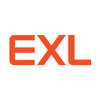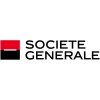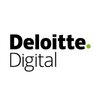Filter interviews by
Barclays Global Service Centre Analyst Interview Questions and Answers
6 Interview questions
IFC can be tested through automated and manual testing methods.
Automated testing can be done using tools like BIMTester and Solibri Model Checker.
Manual testing involves reviewing the IFC file for compliance with industry standards.
Testing should cover aspects like geometry, data, and relationships between objects.
Testing should also ensure that the IFC file can be imported and exported without errors.
Leverage refers to the use of borrowed funds to increase the potential return on an investment.
Leverage allows investors to make larger investments than they would be able to with their own funds.
It can amplify both gains and losses.
Common examples of leverage include margin trading and using options contracts.
High levels of leverage can be risky and lead to significant losses.
Leverage is often used in real estate...
Organisations face various types of risks that can impact their operations and success.
Financial risks such as market fluctuations, credit risks, and liquidity risks
Operational risks such as system failures, supply chain disruptions, and human errors
Reputational risks such as negative publicity, loss of customer trust, and legal issues
Compliance risks such as regulatory changes, data privacy laws, and anti-corrupt...
RWA stands for Risk Weighted Assets, which is a measure of the risk that a bank's assets pose to its solvency.
RWA is used to determine the amount of capital that a bank must hold to cover its risks.
It takes into account the credit risk, market risk, and operational risk of a bank's assets.
Higher risk assets have a higher RWA, which means the bank must hold more capital to cover those risks.
RWA is calculated using ...
ROTE is calculated by dividing net income by average shareholder's equity. Debt Equity ratio is calculated by dividing total debt by shareholder's equity.
ROTE stands for Return on Tangible Equity
ROTE is a measure of a company's profitability
Debt Equity ratio indicates the proportion of debt and equity used to finance a company's assets
A high Debt Equity ratio indicates a company is relying more on debt to finance ...
Governance is the process of managing and controlling an organization to achieve its objectives and ensure compliance with laws and regulations.
Governance involves setting policies, procedures, and guidelines for decision-making and accountability.
It includes monitoring and evaluating performance, managing risks, and ensuring compliance with laws and regulations.
An enterprise-wide risk framework is a structured ap...
Barclays Global Service Centre Analyst Interview Experiences
6 interviews found
I applied via Walk-in and was interviewed in Oct 2023. There were 2 interview rounds.
Be cordial speak to point be logical
(1 Question)
- Q1. Past experience
- Ans.
I have extensive experience in data analysis, project management, and stakeholder communication across various industries.
Worked as a data analyst at XYZ Corp, where I improved reporting efficiency by 30% through automation.
Led a project team to analyze customer feedback, resulting in a 15% increase in customer satisfaction scores.
Utilized SQL and Python for data extraction and analysis, providing actionable insights t...
Interview Preparation Tips
I applied via LinkedIn and was interviewed before Jul 2023. There were 2 interview rounds.
AML transaction monitoring case study
(2 Questions)
- Q1. Skills mindset values
- Q2. Personal development
I applied via Campus Placement and was interviewed in Aug 2022. There were 2 interview rounds.
Generalized Topics like Russia Ukraine war etc
(1 Question)
- Q1. Tell me about yourself
Interview Preparation Tips
I applied via Referral and was interviewed before Apr 2022. There were 3 interview rounds.

(1 Question)
- Q1. Tell about yourself
(1 Question)
- Q1. How do we test IFC
- Ans.
IFC can be tested through automated and manual testing methods.
Automated testing can be done using tools like BIMTester and Solibri Model Checker.
Manual testing involves reviewing the IFC file for compliance with industry standards.
Testing should cover aspects like geometry, data, and relationships between objects.
Testing should also ensure that the IFC file can be imported and exported without errors.
Skills evaluated in this interview
I applied via Referral and was interviewed before Aug 2021. There were 3 interview rounds.
(2 Questions)
- Q1. Financial ratios and understanding on the finance and accounting understanding was checked
- Q2. How is ROTE calculatef. What is Debt Equity ratio
- Ans.
ROTE is calculated by dividing net income by average shareholder's equity. Debt Equity ratio is calculated by dividing total debt by shareholder's equity.
ROTE stands for Return on Tangible Equity
ROTE is a measure of a company's profitability
Debt Equity ratio indicates the proportion of debt and equity used to finance a company's assets
A high Debt Equity ratio indicates a company is relying more on debt to finance its o...
(1 Question)
- Q1. Stress handing round so asked situation based questions
(1 Question)
- Q1. No questions just a discussion with the director
Interview Preparation Tips
I applied via Naukri.com and was interviewed in Oct 2020. There were 3 interview rounds.
Interview Questionnaire
4 Questions
- Q1. What is leverage?
- Ans.
Leverage refers to the use of borrowed funds to increase the potential return on an investment.
Leverage allows investors to make larger investments than they would be able to with their own funds.
It can amplify both gains and losses.
Common examples of leverage include margin trading and using options contracts.
High levels of leverage can be risky and lead to significant losses.
Leverage is often used in real estate inve...
- Q2. What is RWA?
- Ans.
RWA stands for Risk Weighted Assets, which is a measure of the risk that a bank's assets pose to its solvency.
RWA is used to determine the amount of capital that a bank must hold to cover its risks.
It takes into account the credit risk, market risk, and operational risk of a bank's assets.
Higher risk assets have a higher RWA, which means the bank must hold more capital to cover those risks.
RWA is calculated using a sta...
- Q3. What are the types of risks faced by an organisation?
- Ans.
Organisations face various types of risks that can impact their operations and success.
Financial risks such as market fluctuations, credit risks, and liquidity risks
Operational risks such as system failures, supply chain disruptions, and human errors
Reputational risks such as negative publicity, loss of customer trust, and legal issues
Compliance risks such as regulatory changes, data privacy laws, and anti-corruption l...
- Q4. What is governance? Enterprise wide Risk Framework
- Ans.
Governance is the process of managing and controlling an organization to achieve its objectives and ensure compliance with laws and regulations.
Governance involves setting policies, procedures, and guidelines for decision-making and accountability.
It includes monitoring and evaluating performance, managing risks, and ensuring compliance with laws and regulations.
An enterprise-wide risk framework is a structured approac...
Interview Preparation Tips
Skills evaluated in this interview
Top trending discussions






Interview questions from similar companies

I appeared for an interview before Aug 2016.
Interview Questionnaire
1 Question
- Q1. Asked about Resume and family background
Interview Preparation Tips
Experience: Asked about the topic and was told to talk something different
Tips: Just be confident. Have trust in God!
Duration: 25 minutes
Round: Test
Experience: Simple questions were asked to test the skills!
Duration: 45 minutes
Total Questions: 25

Interview Preparation Tips
Experience: Didn't read any material saw resumes of my friends who pass out last year to see how to organize my points. Prepare my resume and refine it with the help of my friends several times
Round: HR Interview
Experience: Saw common HR questions from the websites and prepare answers for that .worked in groups in which one person acted as an interviewer.
Round: Case Study Interview
Experience: For the case studies, I referred many e-books available to learn the basic procedure to solve case studies. Sample case studies are also available on sites of these companies (Mckinsey.com, BCG.com or Bain.com)
Round: Puzzle Interview
Experience: Some companies asked puzzles. Common puzzles can be found on internet (pagalguy.com, brainvista.com , or orkut)
College Name: IIT BOMBAY

Interview Questionnaire
6 Questions
- Q1. Resume-based questions
- Q2. What is the color of door from which you entered?
- Ans.
The door from which I entered was brown.
The door was made of wood.
The color was a dark shade of brown.
There were no decorations or patterns on the door.
- Q3. Did you attend the ppt? What did you like the most about ppt?
- Ans.
Yes, I attended the ppt and found the case studies presented to be the most interesting.
Attended the ppt
Found the case studies to be the most interesting
Impressed by the data presented
Liked the interactive nature of the presentation
- Q4. Intern-based questions
- Q5. If you start a startup of selling books to IITK students through e-commerce what will be the annual demand you can expect from IITK students?
- Ans.
The annual demand for selling books to IITK students through e-commerce depends on various factors such as the number of students, their course curriculum, and their reading habits.
The demand can be estimated by conducting a survey among the students to understand their reading habits and preferences.
The demand can also be influenced by the availability of books in the campus library and bookstores.
The demand may vary ...
- Q6. In your hostel every girl plays badminton atleast once a month. The probability of one playing badminton in 1st week is a, probability that if one doesn’t play in 1st week than she will play in 2nd week is...
- Ans.
Calculating the probability of two friends playing badminton in the same week given certain probabilities.
Calculate the probability of both playing in the first week (a*a)
Calculate the probability of both playing in the second week ((1-a)*b*(1-c))
Calculate the probability of both playing in the third week ((1-a)*(1-b)*c)
Calculate the probability of both playing in the last week ((1-a-b-c)*(1-a-b-c))
Add up all the proba...
Interview Preparation Tips
Experience: 1. Number of Questions: 30 (10 each from mathematics, English and DI).
2. Type of questions and details Questions of Mathematics and DI were mainly from previous years CAT papers.
3. The time was very limited and so speed was very important while solving the questions.
4. Moreover there was cut off for individual sections so keeping that in mind one had give time to each section.
Duration: 30-40 minutes
Total Questions: 10+10+10
Round: HR Interview
Experience: Most of the questions were resume based. The interviewer also tried to confuse me sometimes. While I was answering he looked at the ceiling and here and there but I ensured that I was still answering everything very confidently not diverting my attention.
Round: Case Study Interview
Experience: It was a HR + puzzle + casestudy interview and lasted for 20-25 minutes and had a panel of only one.
General Tips: 1. Don’t leave everything for the end. As December approaches it becomes more and more hectic with end sems, project deadlines, BTP, ppts to attend, test of companies etc. Start preparing early.
2. Do attend ppt and write down points whatever they mention in the ppt. generally one can prepare the questions like why this sector or why this company from the points they mention in ppt.
3. They generally mention that they are looking for in the candidates in the ppt so this helps in preparing the answers in interview. Moreover do spend some time in preparing for HR.
4. At least think and write down few basic points of the questions that are generally asked in the interviews.
Skill Tips: Do solve all previous year question papers of CAT and try to increase speed of solving.
Do practice some case studies and puzzles.
Skills:
College Name: IIT KANPUR

Interview Questionnaire
2 Questions
- Q1. Basic HR based questions
- Q2. Basic guesstimate questions were asked
Interview Preparation Tips
Experience: This round went pretty well in my opinion.
Round: Guesstimate Interview
Experience: I had prepared for guesstimates. So, this round went rather well.
General Tips: 1. I had a CPI of 8.6 and my resume didn't have any co-curricular activities as such. I had an intern in Pidilite Industry and i had given my CAT exam.
2. I had joined CL for CAT which helped me for aptitude tests .
3. Also, I prepared for puzzles and guesstimates, took part in the diamond case study competition though I didn't win it.
4. I had also prepared for core companies as well.
College Name: IIT KANPUR
Barclays Global Service Centre Interview FAQs
Tell us how to improve this page.
Barclays Global Service Centre Interviews By Designations
- Barclays Global Service Centre Process Advisor Interview Questions
- Barclays Global Service Centre Analyst Interview Questions
- Barclays Global Service Centre Senior Analyst Interview Questions
- Barclays Global Service Centre Business Analyst Interview Questions
- Barclays Global Service Centre Associate Vice President Interview Questions
- Barclays Global Service Centre Software Developer Interview Questions
- Barclays Global Service Centre Full Stack Developer Interview Questions
- Barclays Global Service Centre Operations Analyst Interview Questions
- Show more
Interview Questions for Popular Designations
Overall Interview Experience Rating
based on 3 interview experiences
Difficulty level
Duration
Analyst Interview Questions from Similar Companies
Barclays Global Service Centre Analyst Reviews and Ratings
based on 27 reviews
Rating in categories
|
Assistant Vice President
756
salaries
| ₹22 L/yr - ₹39.4 L/yr |
|
Process Advisor
435
salaries
| ₹2.4 L/yr - ₹7.3 L/yr |
|
Senior Analyst
299
salaries
| ₹4.8 L/yr - ₹10.1 L/yr |
|
Assistant Manager
294
salaries
| ₹11.6 L/yr - ₹18.8 L/yr |
|
Analyst
247
salaries
| ₹10.4 L/yr - ₹17.5 L/yr |

DXC Technology

Mphasis

EXL Service

Optum Global Solutions
- Home >
- Interviews >
- Barclays Global Service Centre Interview Questions
















